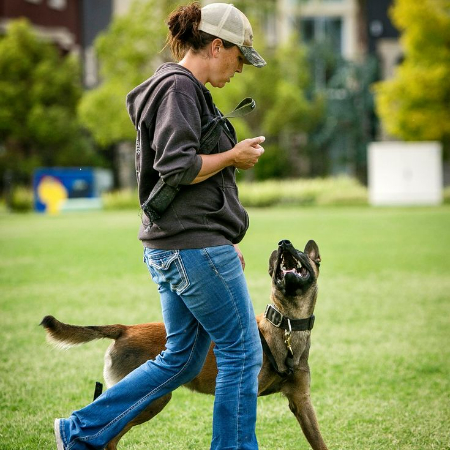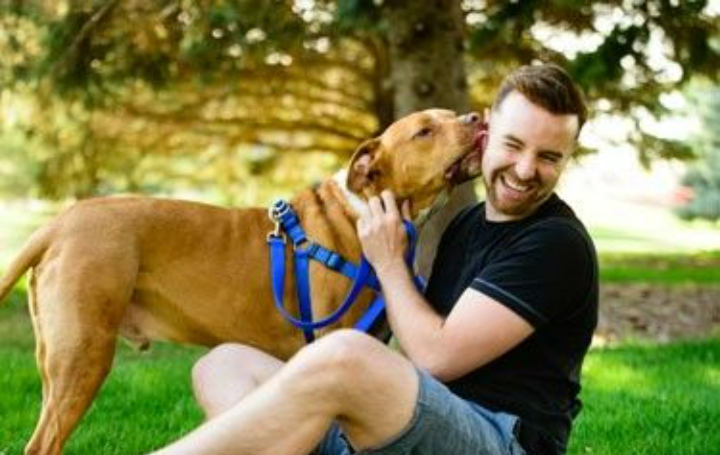The Art of Dog Training: Positive Reinforcement Techniques for a Well-Behaved Pup
Whenever we train our pets, we frequently experience an intense emotional roller coaster. From exhilaration when our dog finally learns to sit on cue to extreme frustration when they make the couch their new chew toy, we never know what to expect. Don’t worry, though! It’s not necessary for dog training to be an uphill battle between delight and frustration.
Training may become an enjoyable, fulfilling, and bonding experience for you and your dog if you adopt the practice of positive reinforcement. Now let’s explore how positive reinforcement methods can help you train your dog to become the well-mannered friend you’ve always wanted!
1. Understanding Positive Reinforcement
Emphasizing positive behaviors and rewarding your dog for desired behaviors instead of punishing them for misbehavior are the cornerstones of positive reinforcement. It’s similar to rewarding your dog with a gold star after every accomplishment!

The foundation of this approach is the notion that actions that yield favorable results are more likely to be repeated. Your dog will rapidly learn that sitting = treat = fantastic when, for example, they sit on order and get a nice treat!
Consider it like this: Imagine that your supervisor gives you a high five, a slice of pizza, or even a salary raise each time you finish a task at work. How driven would you be to continue doing well? Quite driven, do you think? Your dog experiences this when they receive good reinforcement!
2. Why Positive Reinforcement Works Wonders
Dogs adore affection, praise, and of course treats, much like people do. Because it establishes a relationship based on respect and trust rather than fear, positive reinforcement is incredibly effective.
A dog is more likely to engage in a behavior and training becomes enjoyable rather than a job when they know that they will be rewarded for it. Additionally, positive reinforcement aids in providing your dog with a secure and stress-free environment.
A dog that is punished may frequently become fearful, anxious, or even aggressive. On the other hand, giving your dog a treat for a job well done makes them feel happy and secure, which increases their desire to please and learn.
3. Getting Started: The Basics of Positive Reinforcement Training
Select the Appropriate Incentives
Particularly when it comes to dogs, not all rewards are made equal. Some pups may love a game of fetch or a belly rub, but others may go crazy for a succulent piece of chicken. Discovering the cause of your dog’s uncontrollable wagging tail is crucial.
Expert advice: Change things up! By giving your dog a range of rewards, you can prevent boredom from setting in and keep things interesting for them. I mean, really, who would want to eat the same food all the time? And neither does your canine companion!
The timing is crucial.
Time is of the essence when it comes to positive reinforcement. As soon as your dog exhibits the appropriate behavior, you should treat them so they know exactly what they are getting commended for. If your dog sits and you give them a treat after a minute, they might not realize that the behavior is rewarded.
Think about taking dance classes, and when you finally get a step right, the teacher gives you a ten-second applause. A little confusing, huh? When the treat arrives later, your dog experiences the same thing!
Commence Small and Expand
Start your training in a peaceful, quiet place. Start with basic commands like “sit” and “stay,” and when your dog gets the hang of them, work your way up to more difficult ones. Recall that neither Rome nor a well-trained puppy was created in a day!
4. Making Training Fun and Engaging
Make Workouts More Like Play

Given that dogs are avid gamers, why not make training an enjoyable game? Include enjoyable games like agility training, fetch, and hide-and-seek in your routine. This keeps your dog’s mind engaged and fosters a stronger link between you both while also making learning new abilities fun.
Employ Clicker Training
A tiny gadget called a clicker is used in clicker training, a well-liked method of positive reinforcement, to sound an alert at the precise moment your dog exhibits the required behavior. Using this method, your dog will be able to pinpoint exactly which behavior resulted in a reward. The clicker is a useful tool for training outside or in public spaces since it can be heard even in noisy surroundings.
Keep workouts brief and enjoyable
Dogs’ attention spans are brief, much like toddlers’. Too lengthy of a training session can make you and your dog frustrated and bored. Aim for five to ten-minute sessions, several times each day. This keeps your dog interested and eager for their upcoming training session!
5. Overcoming Common Training Challenges
Managing Diversion
One thing is training in a supervised setting, but what happens if you’re outside and your dog finds a squirrel? Because distractions are a part of life, it’s critical to train your dog to concentrate in spite of unfavorable circumstances.
Practice in a calm park or your own backyard at first, then progressively add more distractions. To get your dog to pay attention to you, provide them with expensive treats or toys as an incentive. Always remember that patience is essential!
The Secret Is Consistency.
Regarding training, every member of the family needs to be in agreement. Your dog will become confused if someone encourages them to leap up while another person rewards them for doing so. Your dog will know what is expected of them if you use consistent cues, orders, and rewards.
6. Celebrating Successes and Staying Positive
Training is an adventure rather than an endpoint. Honor the accomplishments of your dog, no matter how minor they may appear. Recognize their advancements and take pleasure in their shared learning experience.
Keep in mind that every dog learns differently and that the most important thing is the relationship you are creating with them along the road. Maintain a cheerful outlook even when things don’t go according to plan.
Dogs have a keen sense of intuition and can tell when their owners are getting angry. You can maintain your dog’s motivation and enthusiasm for learning by being positive and supportive.
7. Beyond Training: Building a Lasting Relationship
Building a lifetime bond with your dog through mutual respect, trust, and understanding is more important than simply giving them commands.

By strengthening your relationship with your dog, positive reinforcement helps you raise a happy, healthy, and well-behaved companion who knows how safe and loved they are.
Positive reinforcement dog training is an art that comes with both material and psychological benefits along the way. It’s about forming a relationship with your dog that makes them feel secure, confident, and eager to learn. Now take those goodies, put on your trainer’s voice, and get set to enjoy some time with your pet.
You may quickly have a well-mannered dog if you give it lots of love, patience, and positive reinforcement. Recall that each stage of this training journey is an opportunity to create memories and strengthen your relationship. Happy working out!
Doglime for more dog-related information.










